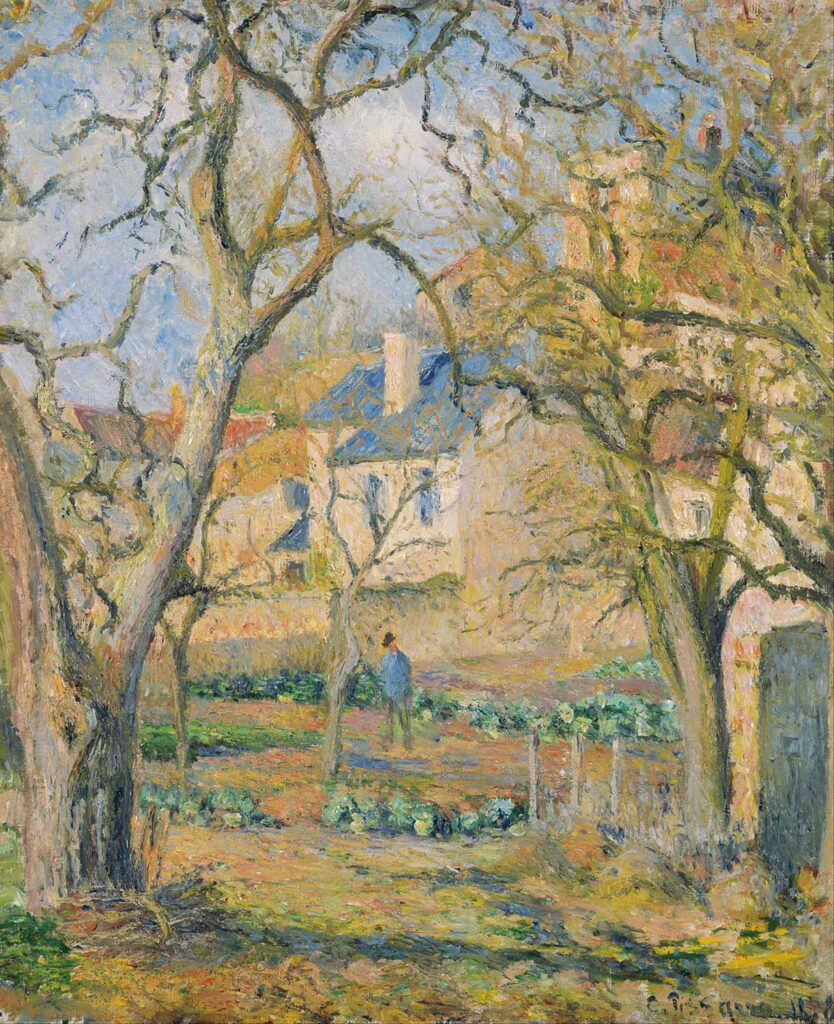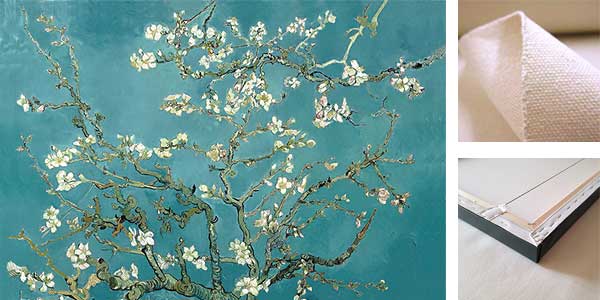
Vegetable Garden by Camille Pissarro was created in 1878. The painting is in Artizon Museum. The size of the work is 55,2 x 45,9 cm and is made of oil on canvas.
After visiting Pontoise in 1866, when he was thirty-six, Pissarro often spent time there, until 1883, producing 300 oils and an enormous number of sketches and prints. Pontoise is an old town about forty kilometers northwest of Paris, on the Oise River, a branch of the Seine. Crops raised in Pontoise were shipped to Paris; it was particularly famous for its cabbages. In this painting, trees with spreading branches surround a cabbage patch. The style, filled with light, with the use of green and blue even in the shadows, is very characteristic of an Impressionist painter… Read more in Artizon Museum
About the Artist
Jacob Abraham Camille Pissarro (10 July 1830 – 13 November 1903) was a Danish-French Impressionist and Neo-Impressionist painter born on the island of St Thomas (now in the US Virgin Islands, but then in the Danish West Indies). His importance resides in his contributions to both Impressionism and Post-Impressionism. Pissarro studied from great forerunners, including Gustave Courbet and Jean-Baptiste-Camille Corot. He later studied and worked alongside Georges Seurat and Paul Signac when he took on the Neo-Impressionist style at the age of 54.
In 1873 he helped establish a collective society of fifteen aspiring artists, becoming the “pivotal” figure in holding the group together and encouraging the other members. Art historian John Rewald called Pissarro the “dean of the Impressionist painters”, not only because he was the oldest of the group, but also “by virtue of his wisdom and his balanced, kind, and warmhearted personality”. Paul Cézanne said “he was a father for me. A man to consult and a little like the good Lord”, and he was also one of Paul Gauguin’s masters. Pierre-Auguste Renoir referred to his work as “revolutionary”, through his artistic portrayals of the “common man”, as Pissarro insisted on painting individuals in natural settings without “artifice or grandeur”. Read more in Wikipedia
Order a reproduction of this work (printed on canvas)
